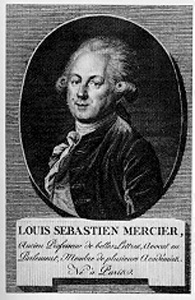Course Introduction
I. The Year 2440
II. Themes in the History of Early Modern Europe
1. The Rise of the State and the Problem
of Secular Authority
2. Religion and Order
3. Gender Relations and Social Change
4. Expanding Horizons--Physical and Mental
III. Readings, Requirements, etc.
Illustration from L'An
2440: The narrator discovers that he is seven hundred years old
Illustration from L'An 2440: The
Throne Room
Image: Louis-Sébastien Mercier, author of The Year 2440: A Dream If There Ever Was One (1771).




